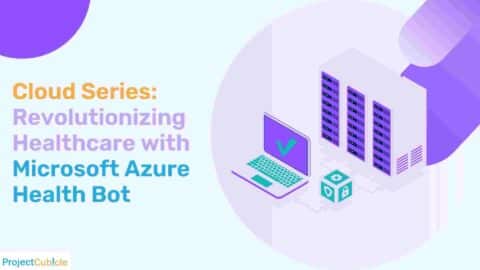AWS Vs. Azure Comparison: Choosing the Right Cloud Platform In today’s rapidly evolving technological landscape, cloud computing has transformed...
Cloud Computing
Embark on a journey to efficiency! Explore Project Cubicle’s Cloud Computing section for game-changing insights in IT service management. Elevate your tech strategy in the cloud. ☁️💻 #CloudTech #ITSM #ProjectCubicle
Mastering the Cloud: The Top 10 Cloud Computing Skills 2023 (Senior – Junior Interview) – projectcubicle
Cansu Aydin, , Cloud Computing, 2Mastering the Cloud: The Top 10 Cloud Computing Skills 2023 In today’s rapidly evolving technology landscape, possessing the right...
AWS Series: Pushing a Docker Image to the EC2 Container – projectcubicle
Cansu Aydin, , Cloud Computing, 0AWS Series: Pushing a Docker Image to the EC2 Container Welcome to AWS Series! Learn how to push a...
Cloud Series: Revolutionizing Healthcare with Microsoft Azure Health Bot – projectcubicle
Cansu Aydin, , Cloud Computing, 0Cloud Series: The Ultimate Guide to Revolutionizing Healthcare with Azure Health Bot Dive into the transformative potential of Microsoft...
Choosing the Right Cloud Migration Strategy As this trend for cloud computing continually grows, organizations in every corner of...
AWS Spot Instances: Optimizing Workload Efficiency in Cloud Computing – projectcubicle
Cansu Aydin, , Cloud Computing, 0AWS Spot Instances: Optimizing Workload Efficiency in Cloud Computing In the dynamic landscape of cloud computing, Amazon Web Services...
How to Become an Azure Architect: Your Path to Success – projectcubicle
Cansu Aydin, , Cloud Computing, 0How to Become an Azure Architect: Your Path to Success How to Become an Azure Architect? In today’s rapidly...
The Benefits Of Cloud-Based Legal Case Management Systems – projectcubicle
Ananya Prisha, , Cloud Computing, Software Tools, 0The Benefits Of Cloud-Based Legal Case Management Systems Imagine a bustling law firm with multiple attorneys handling diverse cases,...
Cloud Computing Skills to Master: Boost Your IT Career – projectcubicle
Cansu Aydin, , Cloud Computing, 0Cloud Computing Skills to Master: Boost Your IT Career The cloud technology market is constantly evolving and opening up...
The Ultimate Guide to Cloud Computing for Companies – projectcubicle
Mario Bisson Andini, , Cloud Computing, 0The Ultimate Guide to Cloud Computing and How it Can Help Companies What makes a business successful? Security, proper...
Latest Articles
- Oracle’s April 2023 Readiness for Critical Patch Update
- A Comprehensive Guide to Marketing Your New Business Successfully
- Mastering Freight Management: Tips for Getting the Best Freight Quotes
- Ensuring Compliance: Navigating the Path to FINRA-Compliant File Sharing
- Mastering the Art of Content Creation: A Blueprint for Business Success
Templates
- Individual Development Plan Examples & Template for Managers – projectcubicle December 24, 2020
- Lessons Learned Template Example & Questions – projectcubicle October 22, 2019
- Project Risk Management Plan Template and Example – projectcubicle July 26, 2019
- A Sample Kickoff Meeting Agenda Template for Projects – projectcubicle July 25, 2019
- Statement of Work Template and Example – projectcubicle May 27, 2019











